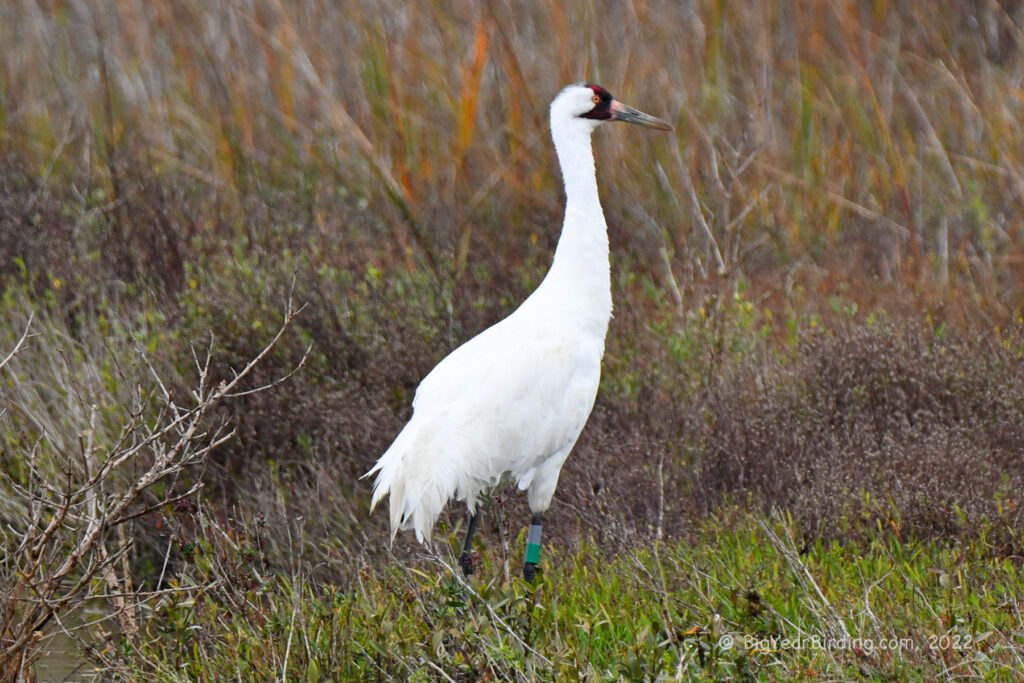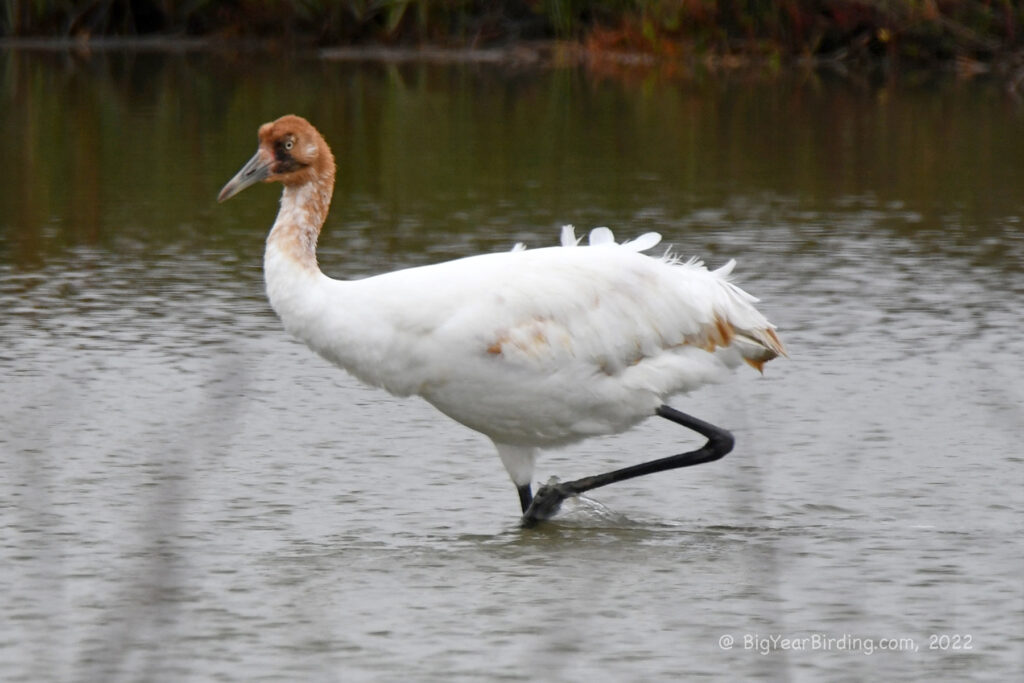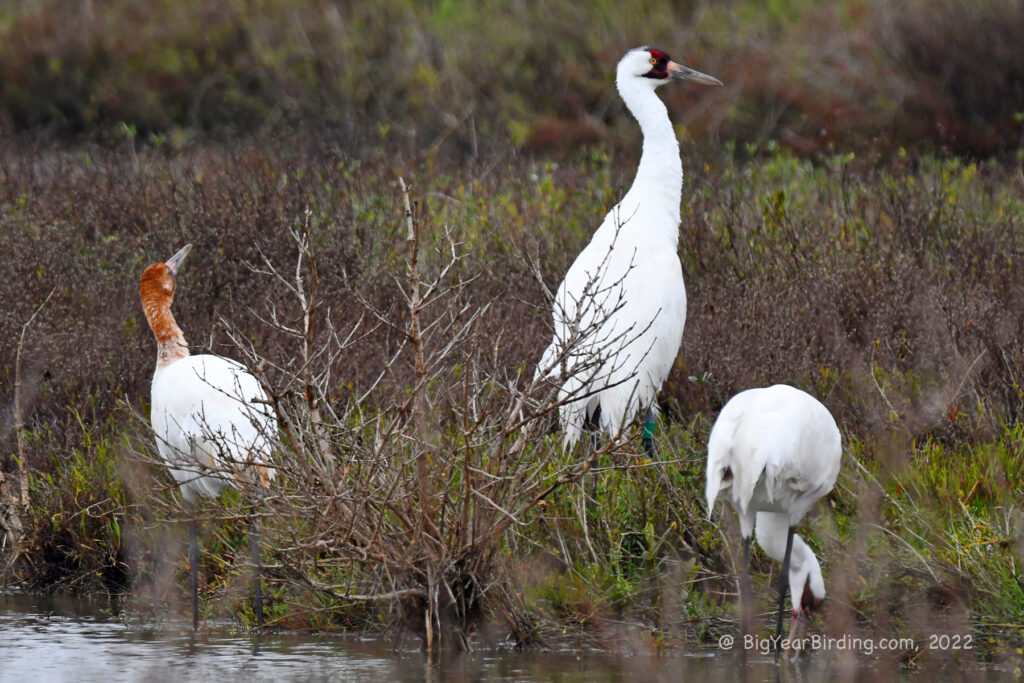
The Whooping Crane (Grus americana) is a magnificent and rare bird that stands at an impressive height of 5 feet, making it the tallest bird in North America. It has a wingspan of 7.5 feet and a body weight that ranges from 13 to 17 pounds. This species has distinct black and white feathers, with a red patch of bare skin on its head. Its long, pointed beak is designed for catching small prey and probing in the mud for food.
The Whooping Crane is known for its distinctive trumpeting call, which can be heard from miles away. The sound is used to communicate with other members of the flock and establish territory. The species’ unique vocalization and appearance make it one of the most recognizable birds in the world.
The Whooping Crane has a limited breeding range in North America, with only a few hundred individuals remaining in the wild. During the summer months, the birds breed in the wetlands of Canada and the United States. In the fall, they migrate south to Texas and Mexico, where they spend the winter. The migration route is long and treacherous, spanning over 2,500 miles. During this journey, the birds must navigate through storms, predators, and habitat loss.
The Whooping Crane has faced numerous threats over the years, including habitat loss, hunting, and predation. In the early 20th century, the species was on the brink of extinction, with only 15 individuals remaining in the wild. Thanks to conservation efforts, the population has slowly recovered, but it is still considered critically endangered. Efforts to protect the bird include habitat restoration, captive breeding programs, and public education.

In summary, the Whooping Crane is an iconic and unique bird species in North America. With its tall stature, striking appearance, and distinctive call, it captures the attention of birdwatchers and nature enthusiasts alike. Despite its endangered status, the species has made a remarkable recovery over the years, thanks to conservation efforts. The Whooping Crane serves as a powerful reminder of the importance of preserving and protecting our natural world.

